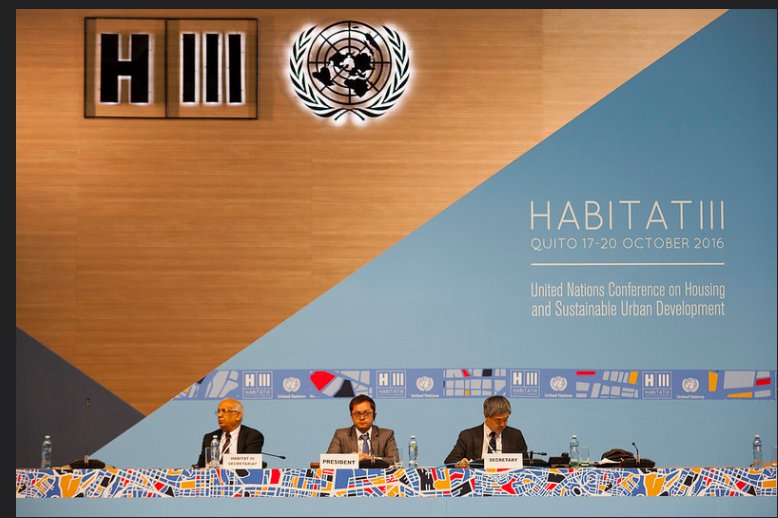Habitat III, the United Nations Conference on Housing and Sustainable Urban Development, is an event that takes place once every 20 years, and 2016 is the year of its third edition. Around 50.000 people were present in Quito, Ecuador to attend various discussions within Habitat III, including world leaders, mayors, businesses, innovators, researchers and experts.
During the conference, the most recent draft of the New Urban Agenda will be adopted by representatives of all 193 countries of the United Nations. The 24-page document contains the guiding principles for what urban development should look like in the following decades – it is a much more concise document than what resulted from the 1996 Habitat II conference in Istanbul, which was over 100 pages, making it much harder to follow and implement.
Brookings Institution’s Alaina Harkness believes that although the New Urban Agenda is not legally binding, decision-makers will not just move beyond it, as it doesn’t just contain targets that might not be ambitious enough, but a set of clear priorities and guidelines for dealing with the growing urbanization that is happening all over the world.
The New Urban Agenda calls for compact cities, polycentric growth, transit-oriented development, adequate public space and reining in sprawl – experts say that these principles are not ground-breaking or necessarily innovative, but that the fact that they are now part of the global discussion and that they have been agreed upon by so many nations is a very good sign that they might have a chance of being implemented in many places and that people around the world have started to prioritise urban issues at an unprecedented level. There is also a strong emphasis on giving local government more tools and more power to drive sustainable development.
Mixed reviews
The impact of Habitat III and of the adoption of the New Urban Agenda might not be seen for quite a long time, as the goals adopted will be long-term themselves, never mind the time it will probably take municipalities to actually implement some of the plans outlined here. However, Judith Henderson of IHC Global believes that continuous reference to the Agenda and the adoption of new commitments that are in tune with it – like changes in policy, creation of agencies or allocation of resources – will give us a sense of its long-term impact.
There have also been critical views of the New Urban Agenda, with some claiming that it privileges cities as engines of prosperity and disregards their impact on marginalised populations, as some people can be affected negatively by city developments, through gentrification, ghettoization and increased income inequality. Others, like Michael Cohen, director of the urban programme at the New School in New York, believes that although the Agenda has correctly identified priorities, it has not provided solutions or guidance on how to address these goals, and that it does not address change over time, instead operating in an ahistorical vacuum – according to Cohen, it does not take into account ‘the profound changes of globalization, natural disasters, technologies or political values’.
Click here for our more detailed breakdown of the New Urban Agenda.
Sources: CityLab; Habitat3; The Guardian; Citiscope
Photo: Habitat3 on Twitter






